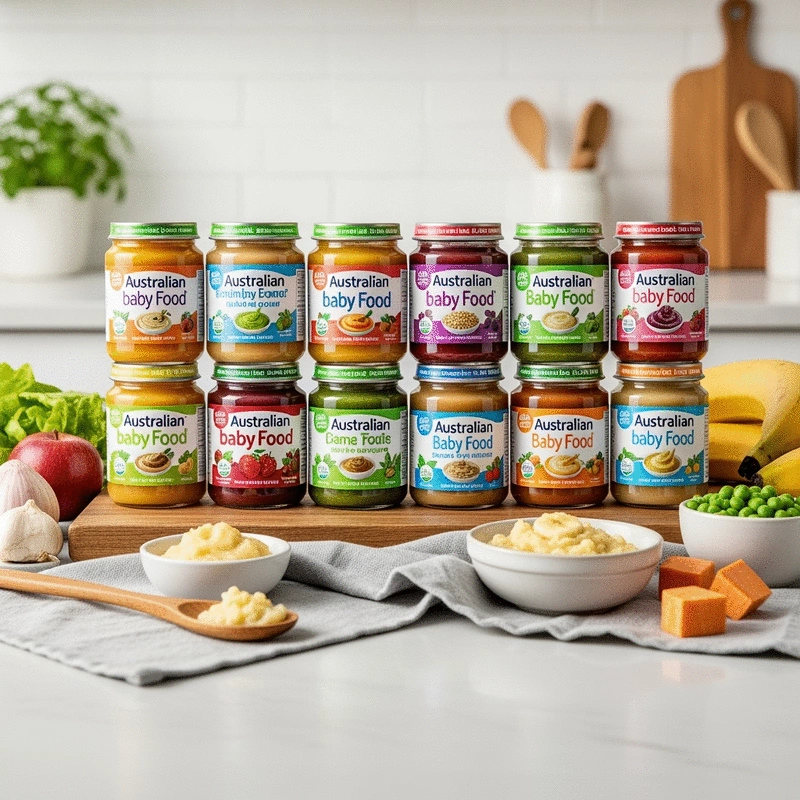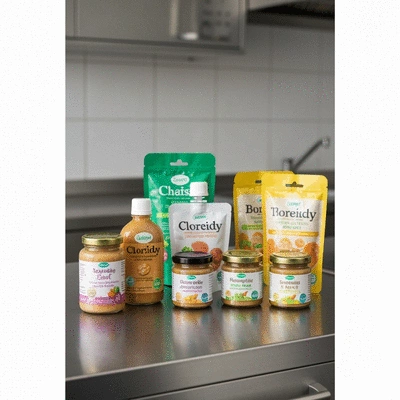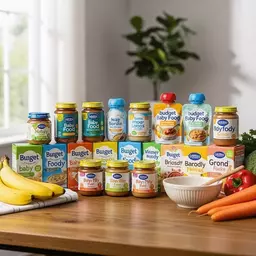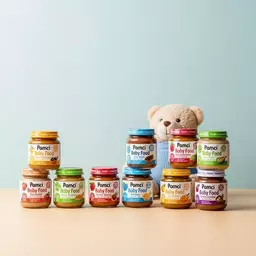Stage 1: Purees (4-6 Months)
Characteristics: Single-ingredient, smooth purees.
Focus: Introducing individual flavors, basic nutrition.
Examples: Pureed apples, sweet potatoes.
What if the choices you make today for your baby's nutrition could shape their lifelong eating habits? Understanding the stages of baby food can empower you to make informed decisions that support your child's growth and health.
This visual outlines the progression through key baby food stages, highlighting the nutritional and textural differences crucial for a baby's development. For a deeper dive into how different brands approach these stages, check out our guide to choosing baby food brands wisely.
Characteristics: Single-ingredient, smooth purees.
Focus: Introducing individual flavors, basic nutrition.
Examples: Pureed apples, sweet potatoes.
Characteristics: Complex flavors, thicker, chunky textures.
Focus: Expanding palate, developing chewing skills.
Examples: Mixed fruit/veg purees, soft lumps.
Characteristics: More textured, mixed meals, small pieces.
Focus: Transition to table foods, fine motor skills.
Examples: Soft pasta, finely chopped meats, finger foods.
Organic Ingredients: Avoid pesticides, chemicals.
Iron Fortification: Vital for brain development.
Avoid Additives: No added sugars, artificial preservatives.
As a parent, choosing the right baby food can feel like a daunting task! With so many options available, it’s crucial to understand the different stages of baby food and the impact that nutritional quality has on your little one’s growth and development. Here at Best Baby Food Australia, we’re dedicated to helping you navigate these choices with confidence.
Between the ages of four months and two years, your baby will transition through various stages of food, each designed to meet their evolving nutritional needs. Selecting the right brand ensures that your child receives the essential vitamins and minerals needed for healthy development. Let’s dive deeper into why nutritional quality matters!
When it comes to baby food, not all brands are created equal. Nutritional quality plays a crucial role in your baby’s growth, cognitive development, and overall health. Choosing brands that prioritize wholesome ingredients and avoid harmful additives can set the foundation for a lifetime of healthy eating habits. For more insights on specific brands available in Australia, explore our Australian baby food brand insights.
By focusing on brands that meet these criteria, you’ll provide your baby with the best start possible. Remember, the choices you make today will influence their taste preferences and dietary habits for years to come!
As you shop for baby food, it’s essential to be aware of the ingredients and additives that may not be beneficial for your child. Here’s a list of common items to steer clear of:
By avoiding these ingredients, you can help protect your baby from potential health risks. Remember that reading labels is key! It’s amazing how many brands use fillers or additives that don't add any nutritional value.
Understanding the differences between baby food stages is vital in ensuring your child's nutritional needs are met appropriately. Here’s a quick overview of the key differences you should know:
Choosing the right stage of baby food is essential for your child's development. Each stage offers unique benefits and ensures that they receive the appropriate nutrients for their growing bodies. So, pay attention to these stages, and trust your instincts as a caregiver!
Did you know? When choosing baby food, consider brands that use seasonal ingredients. Seasonal produce is often fresher and more nutritious, ensuring your baby gets the best flavors and health benefits. Plus, it supports local farmers and reduces environmental impact!
Choosing the right baby food brand can feel overwhelming, but it doesn’t have to be! With so many options available, understanding your family's specific needs is crucial. At Best Baby Food Australia, we believe that informed decisions start with knowledge. So, let's explore how to find the perfect baby food for your little one!
When searching for a brand, consider the nutritional quality, ingredients, and your baby's age. Each brand offers unique benefits, so it’s essential to align those with your family's preferences and your baby's developmental stage. Remember, every little tummy is different, and what works for one child may not work for another!
As parents, we want the best for our children. Here are some helpful tips to guide you in selecting the right baby food brand:
By focusing on these aspects, you'll be equipped to make choices that support your child’s health and well-being. So, what brands are you leaning towards? Feel free to share your thoughts in the comments!
Establishing healthy eating habits early on can shape your child's relationship with food for years to come! As I often tell parents, introducing a variety of flavors and textures can make mealtime an exciting adventure. Here are some strategies to encourage good habits:
Encouraging these habits now sets the foundation for a lifetime of healthy eating. For more detailed advice on introducing solids, explore our guide on introducing solid foods at 6 months. Have you found any tips that worked wonders for your baby? I’d love to hear your stories!
Here is a quick recap of the important points discussed in the article:



 What if I told you that making your own baby food could not only save you money but also give you to
What if I told you that making your own baby food could not only save you money but also give you to
 What if the choice of your baby's food could shape their entire approach to nutrition for life? As y
What if the choice of your baby's food could shape their entire approach to nutrition for life? As y
 As you navigate the often overwhelming world of baby food shopping, it's essential to arm yourself w
As you navigate the often overwhelming world of baby food shopping, it's essential to arm yourself w
 As you embark on the journey of selecting the best baby food for your little one, you might wonder h
As you embark on the journey of selecting the best baby food for your little one, you might wonder h